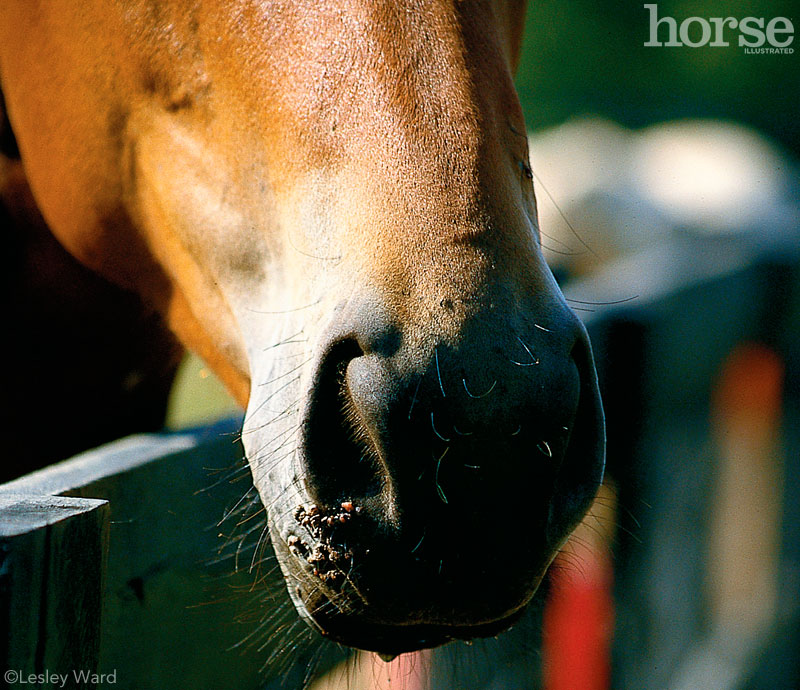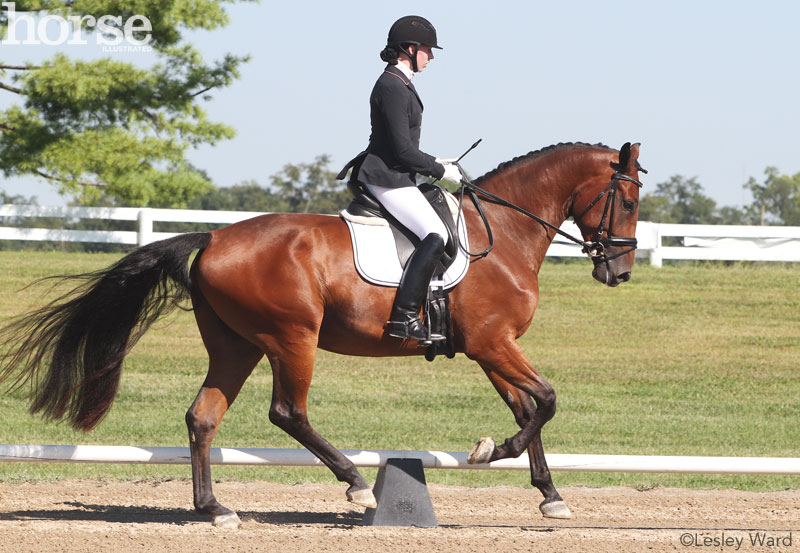
Q: My young horse has warts all over his nose and I really don’t like how they look. Is there something I can do to get rid of them, or will they go away on their own?
A: It’s not uncommon for a horse to develop warts, particularly on thin-skinned or hairless areas, like the muzzle, lips, eyelids, or inside the ears. Warts are caused by the papilloma virus, which invades skin tissue that has been damaged by insect bites, abrasions or even sunburn. While this is primarily a cosmetic issue that doesn’t really bother your horse, it is contagious to other horses. Besides possible direct communicability from horse to horse, other vectors, such as insects, human hands, and equipment can also transfer the virus to a horse. Fly control and good biosecurity measures are important. Take care when sharing feeding equipment, grooming tools, and tack between horses; disinfect equipment with povidone iodine or bleach.
Young horses, especially those under 3 years old, seem to be most affected because their immune systems aren’t yet primed to deal with this virus. The good news is that once a horse has been exposed to warts, the immune system gets in gear and these usually go away spontaneously within one to nine months, even without treatment. Adult horses rarely develop warts because at some point in their younger lives, they were exposed and have mounted an effective immune response.
The other good news is that warts go away without leaving scars in the affected area. If they are really bothering you (remember, your horse doesn’t really notice them), you could have them removed with surgical excision, laser excision, or by cryotherapy (freezing with liquid nitrogen). However, freezing often creates spots of depigmented skin, which you may find just as annoying as the warts; this loss of pigment is permanent.
Many of the remedies that you may have heard about, such as topical ointments or autoimmunization with wart “vaccine,” haven’t been proven effective. In general, it’s best just to leave the warts alone and let nature take its course as the horse’s immune system does its job. The warts will eventually clear up on their own.
NANCY S. LOVING, DVM, is a performance horse veterinarian based in Boulder, Colo., and is the author of All Horse Systems Go.
This article originally appeared in the May 2015 issue of Horse Illustrated magazine. Click here to subscribe!



